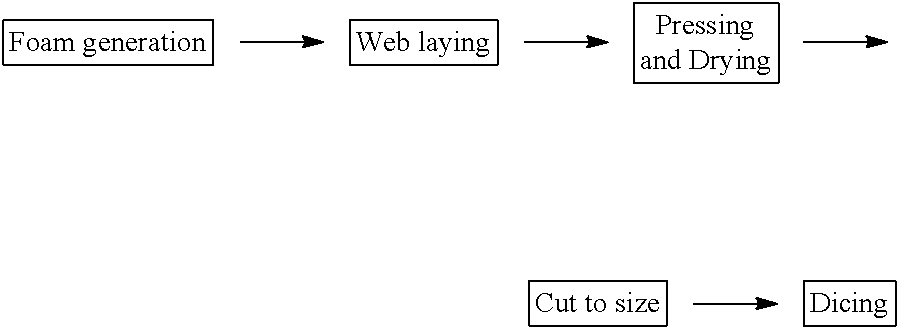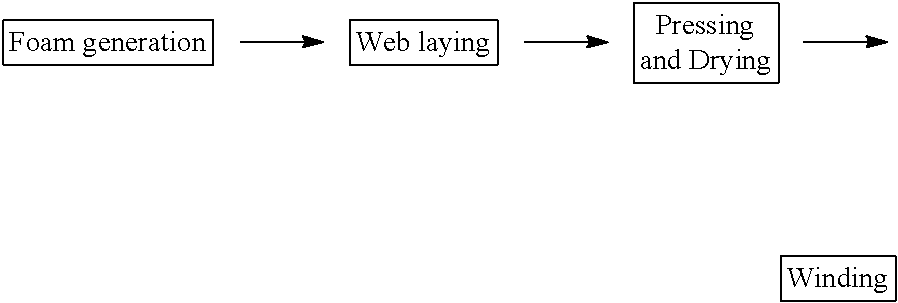Production of high performance thermoplastic composites
a thermoplastic composite and high-performance technology, applied in the direction of non-fibrous pulp addition, foam addition, papermaking, etc., can solve the problems of low production efficiency, and low cellulose content of lignin composites
- Summary
- Abstract
- Description
- Claims
- Application Information
AI Technical Summary
Benefits of technology
Problems solved by technology
Method used
Image
Examples
example 1
Foam Forming of Composites Containing Cellulose Fibres and a Thermoplastic Polymer
[0116]Cellulose fibres obtained from bleached pine pulp were mixed with a polyethylene matrix in powder form, to give a 50 / 50 ratio of fibre / polymer. Then water was added to the mixture until the consistency of 3.8% was reached. Sodium dodecyl sulphate (SDS) was added, whereafter foaming of the mixture was achieved by stirring at high speed (3000 rpm) and using a mixing element providing efficient axial flow.
[0117]The obtained foam was first drained on a wire and subsequently oven dried at 70° C. to provide a nonwoven mat with a grammage of 1000 g / m2. Two mats were layered and subsequently compression moulded between hot moulds (175° C.) into a plate having a grammage of 2000 g / m2. Pure polyethylene matrix and pure foam formed pine pulp webs were used as references.
[0118]The tensile strength, the modulus and the strain at break of these structures were measured, and the results are shown in the below T...
example 2
Foam Forming Composites Containing Cellulose Fibres and Thermoplastic Lignin
[0119]Cellulose fibres obtained from pine pulp were mixed with a polymer matrix in powder form, to give a 50 / 50 or 40 / 60 ratio of fibre / polymer. The polymer matrix consisted of a mixture of lignin (51%), starch acetate (29%) and triethyl citrate (20%). Polyvinyl alcohol (PVA) was added, whereafter foaming of the mixture was achieved by efficient stirring, as described in Example 1. The obtained foam was first dried on a wire and then oven dried at 70° C. resulting in a porous web with a varying grammage.
[0120]The obtained webs were compression moulded using hot moulds (185° C.) into a plate of varying grammage. Pure pine pulp fibres were used as a reference.
[0121]The tensile strength, the modulus and the strain at break of these structures were measured, and the results are shown in the below Table 2.
TABLE 2Composition and strength of fibre / polymer structures.TensileStrain atGrammageFibreMatrixMatrixMatrixFo...
PUM
| Property | Measurement | Unit |
|---|---|---|
| Temperature | aaaaa | aaaaa |
| Fraction | aaaaa | aaaaa |
| Structure | aaaaa | aaaaa |
Abstract
Description
Claims
Application Information
 Login to View More
Login to View More - R&D
- Intellectual Property
- Life Sciences
- Materials
- Tech Scout
- Unparalleled Data Quality
- Higher Quality Content
- 60% Fewer Hallucinations
Browse by: Latest US Patents, China's latest patents, Technical Efficacy Thesaurus, Application Domain, Technology Topic, Popular Technical Reports.
© 2025 PatSnap. All rights reserved.Legal|Privacy policy|Modern Slavery Act Transparency Statement|Sitemap|About US| Contact US: help@patsnap.com



